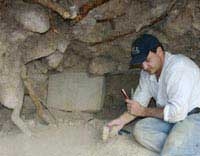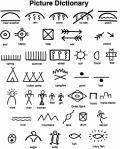Archaeologists Discover Treasure Inside a Sunken Temple and Sanctuary in Egypt.
While exploring a canal off the Mediterranean coast of Egypt, archaeologists have uncovered a submerged temple and a sanctuary filled with ancient treasures associated with the god Amun and the goddess Aphrodite.

Underwater archaeologists have discovered numerous artifacts inside the temple, including gold objects, jewelry, and a djed pillar, a symbol of stability made from lapis lazuli. (Photo: European Institute of Underwater Archaeology (IEASM))
The temple partially collapsed during a great flood in the mid-2nd century BC and was originally built to worship the god Amun. According to a statement from the European Institute of Underwater Archaeology (IEASM), this temple was so significant that pharaohs would visit it to receive their titles of power, proclaiming themselves as global rulers from the supreme deity of ancient Egyptian temples.
This now-abandoned structure was once part of the ancient port city of Thonis-Heracleion located in the Aboukir Bay (also known as Bay of Abū Qīr). The city now lies underwater, approximately 7 km from today’s Egyptian coastline, having been destroyed in a major earthquake and tidal wave that caused the ground to liquefy and sink into the Nile Delta.
Numerous Ritual Tools Made of Silver and Gold
During the exploration of the temple, archaeologists unearthed several treasures and secrets, including ritual tools made of silver, gold jewelry, and a gypsum container that was once used to hold perfume or ointment for application.
At this site, divers also discovered well-preserved underground structures supported by wooden columns and beams dating back to the 5th century BC.
Franck Goddio, president of IEASM and a French underwater archaeologist leading the excavation, stated: “It is incredibly moving to discover such delicate objects, still intact despite the great flood.”
To the east of the temple, archaeologists found a Greek sanctuary dedicated to the goddess Aphrodite. Archaeologists suggest that this indicates that the Greeks were allowed to trade and settle in the city during the time of the Saite dynasty [between 688 BC and 525 BC], establishing sanctuaries for their own deities.
Researchers noted that this sanctuary also housed a cache of Greek weaponry, indicating that Greek mercenaries were once present in the area to protect access to the Kingdom at the Nile River or the Canopic branch.





















































